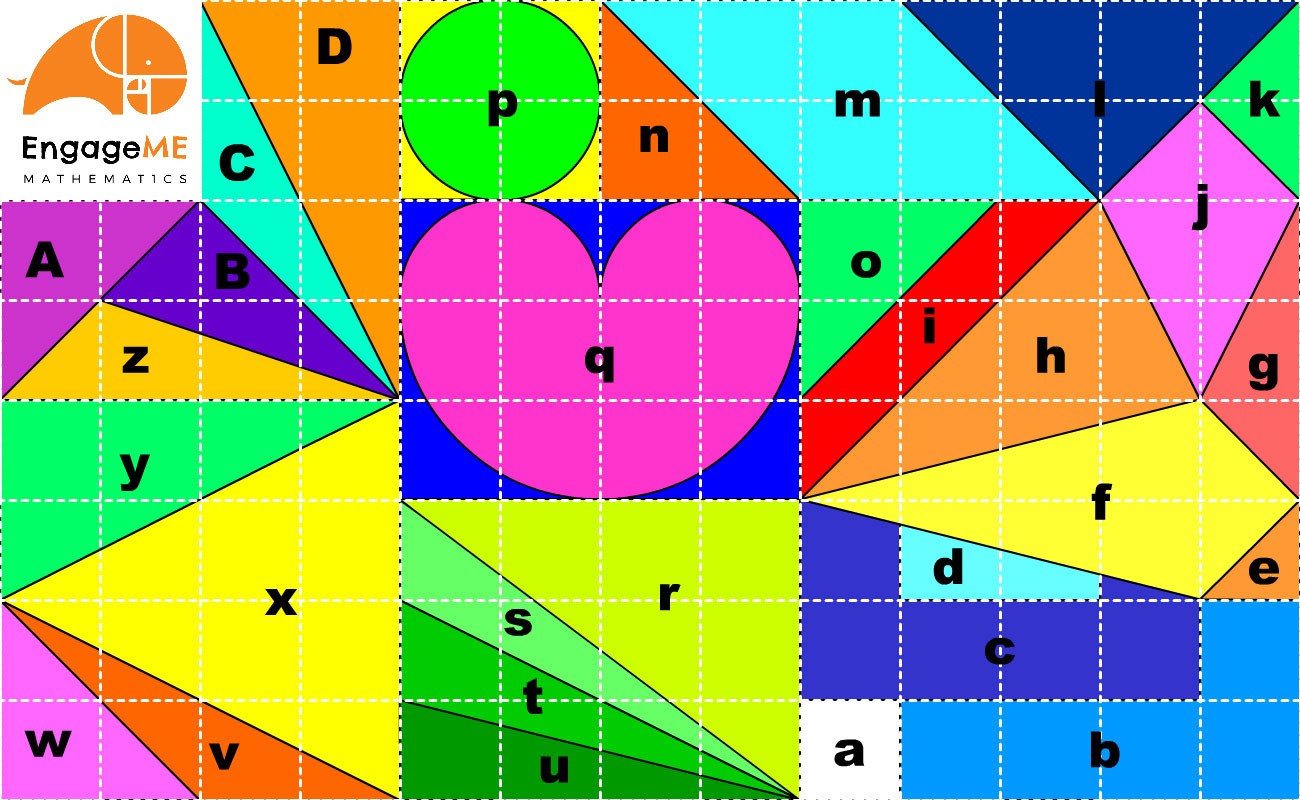If a = ?
If a = ?
Activity Highlights
Highlights:
-
-
Students reason mathematically to determine the value of different shapes.
- Students develop mathematical vocabulary through discussing their reasoning and justifying their responses.
- Provides opportunities for students to connect ideas relating to area, perimeter, geometry, multiplicative thinking and proportional reasoning.
- Students apply multiplicative strategies and proportional reasoning when changing the initial value for a.
-
Pre-lesson Preparation
Pre-lesson preparation:
-
-
Download the image.
- Consider how you would like to use the image e.g. What do you want students to achieve from working with this image?
- e.g. consider proficiencies such as understanding, fluency, problem solving, reasoning, mathematical dispositions etc.
- Consider the questions that you might ask to help guide students to achieving these outcomes. For example:
- Fluency: If a = 1, what might b, c & f equal?
- Understanding: What other shapes have the same value as f?
- Reasoning: Which shape is the largest? How do you know?
- Problem Solving: If the perimeter of b = 60, what can you tell me about the areas of the other shapes?
-
Organise equipment:
-
- Project the image up on to the board, or send it to students electronically.
- If possible, have the image ready to go on the board as students walk in.
- We recommend uploading the image to a space where students can collaborate and draw on the image together.
Suggested Learning Goals & Success Criteria
| Learning Goals | Success Criteria |
| Reason mathematically by explaining and justifying their thinkinng. |
I can:
|
|
Working collaboratively
|
I can:
|
Note: You can take this task in many directions and use it to build a range of different social, cognitive, and behavioural skills within your students. The suggestions above are only a couple of examples of cognitive and social skills which this task could be used to teach. We recommend you think about the students in your class, their specific learning needs and how this task might be used to address these when determining your learning goals and success criteria for your students.
Prerequisite Skills
This activity requires the following pre-requisit skills:
-
- A developing understanding of area
Engage
Suggested open ended hook:
Main Activity
Instructions for the activity:
-
- After asking the initial prompt (see ‘engage’ section), give students 2 minutes to work in silence and think of two things they can tell you, and one question which comes to mind.
- The idea behind asking for questions, is to give students the opportunity to take ownership of the activity and take it in a direction which they are most curious about. In doing this, you will likely find that some students have already answered other students questions when writing down the two things they have noticed. This can contribute to a sense of belonging by helping students to feel valued.
- Note: Some students may be reluctant initially to engage in writing down either their noticings or questions (or both). If this is the case, provide additional prompts privately to these students, for example:
- For noticings: If a = 1, could you tell me the value of any other shape? Which ones, and what are they equal to?
- For questions: What shapes grab your attention? Why? What question might you have about this shape?
- Over time, with exposure to similar types of tasks, students will become better with responding to these types of questions.
Extensions
Taking things further:
The open-ended nature of this task means it can be taken in may different directions, and have many different entry and exit points. Below are just a few additional prompts which can be used to prompt student thinking and discussion:
-
- What if a = 2, 3 or 5 etc.?
- What if a =
 +1 (note, all letters are already used on the image, therefore, another pronumeral should be used such as an emoji or other form of symbol).
+1 (note, all letters are already used on the image, therefore, another pronumeral should be used such as an emoji or other form of symbol). - What if b = 10 or c = 8 etc?
Summary & Assessment
Suggested Reflection Prompt:
-
- Impress me! Choose one shape which you think is challenging and explain how to find it’s value.
- Which shapes did you find the easiest to determine the values for? Which shapes were the most challenging? Which shapes are you still unsure about?
Use these responses as formative assessment to guide future teaching and learning, and as evidence of student growth throughout the lesson/activity.

